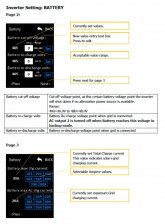Engineer DIY
New Member
- Joined
- Dec 31, 2020
- Messages
- 9
Hello All,
I am in a dilemma here to understand, do I need a special Lithium charger or Can I use my Switching Power Supply Gophert CPS 1660 ( 16 V 60 Amps max) it does have CC and CV modes, to charge my LifePO4, My build will be 48V 280 Ah, However after top-balancing and capacity testing I will have to charge it back up and top balance again. So I was thinking to speed up the process perhaps I can charge it with Bench power supply in 4S configurations with 12V 4S BMS? Another option is to add Hobbyking Turnigy Reaktor QuadKore 1200W 80A (4 X 300W 20A) Balance Charger to my Gophert Power supply.
I wanted to get progressive dynamics charger but they only do 110V AC version but in my country is 220VAC.
Link for Turnigy Charger: https://hobbyking.com/en_us/turbo-c...468&indexName=hbk_live_magento_en_us_products
I am in a dilemma here to understand, do I need a special Lithium charger or Can I use my Switching Power Supply Gophert CPS 1660 ( 16 V 60 Amps max) it does have CC and CV modes, to charge my LifePO4, My build will be 48V 280 Ah, However after top-balancing and capacity testing I will have to charge it back up and top balance again. So I was thinking to speed up the process perhaps I can charge it with Bench power supply in 4S configurations with 12V 4S BMS? Another option is to add Hobbyking Turnigy Reaktor QuadKore 1200W 80A (4 X 300W 20A) Balance Charger to my Gophert Power supply.
I wanted to get progressive dynamics charger but they only do 110V AC version but in my country is 220VAC.
Link for Turnigy Charger: https://hobbyking.com/en_us/turbo-c...468&indexName=hbk_live_magento_en_us_products





